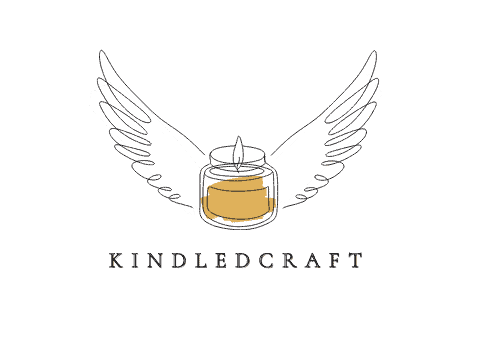Candle snuffers are a tool used to extinguish candles. They can be made out of many different materials, including metal, glass, or plastic. This guide will show you how to make your candle snuffers using everyday household items. We will also discuss the different ways that candle snuffers can be used.
The purpose of a candle snuffer is to extinguish a candle flame without blowing on the candle. Candle snuffers come in many different shapes and sizes, but they all serve the same purpose. Blowing on a candle will cause unpleasant-smelling smoke to fill your home – candle snuffers prevent this.
We will explore how you can make your candle snuffer below and cover why candle snuffers are an essential tool for candle owners.

Why use a candle snuffer or wick dipper?
A candle snuffer is a device used to extinguish candles. It consists of a small-cap or hook with a long handle. In the case of a candle snuffer, there is a cap at the end of the handle – the cap is placed over the flame extinguishing the lit candle and preventing smoke from being released. A wick dipper consists of a hook used to dip the wick under the melted wax. This will extinguish the flame and prevent smoke from releasing into the air.
Candle snuffers and wick dippers are essential tools for anyone who uses candles regularly. They are safer for extinguishing flames and keeping candle wax from getting on surfaces. Candle snuffers are also a great way to prolong the life of your candles. They also ensure your scented candle is not ruined by the smell of smoke once extinguished.
If you use candles often, it’s good to have a candle snuffer or wick dipper on hand. Candle snuffers and wick dippers are relatively inexpensive and can be found at most home goods stores. You can also make your candle snuffer or wick dipper with a few household items.
Do candle snuffers and wick dippers stop smoke completely?
Candle snuffers will not stop all candle smoke. However, they will reduce the smoke released from the candle significantly compared to blowing out an open flame. On the other hand, wick dippers will stop all smoke as the wick is completely submerged under the pooled wax, preventing smoke from being released.
How do candle snuffers and wick dippers work?
In the case of a candle snuffer, there is a cap on the end of the handle; place the cap over the top of the flame. Keep the flame covered until a small amount of smoke is released from under the cap. This will have “snuffed” out the flame. There will be a small amount of smoke released into the air with candle snuffers but far less than when you blow out your candle.
With a wick dipper, no smoke is released. You will need to take the loop at the end of the wick dipper and place it around the wick. Once you have done this, pull the wick down until it is submerged under the pooled wax. Move the wick back to an upright position with the wick dipper.
What do you need to make a wick dipper?
To make your candle snuffer, you will need:
- a wire (we recommend 18 gauge craft wire).
- a pair of pliers/wire cutters.
- a candle.
- a heat source.
- decorative beads or gemstones that are suitable for 18-gauge wire.

How to make a candle wick dipper?
Follow these steps to make your candle snuffer:
- Cut your wire to your preferred length from the spool of wire.
- With the pliers, bend a loop at one end of the wire length you just cut.
- Add an additional loop 8 to 10 cm away from the first loop, bending the wire back down to become straight again. This will stop the beads from moving down the wire.
- Slide your decorative beads or gemstones onto the wire and fill the wire leaving more than 6 cm of wire exposed.
- To create the handle, bend the exposed wire into a coil.
You now have your very own candle snuffer! Once you have made one, why not make several. They make great gifts for other candle lovers, and you can even sell them if your designs look good enough. Practice makes perfect – so get creative with your beads and gemstones.
How to snuff out a candle without a snuffer?
You can use a metal spoon if you don’t have a candle snuffer or wick dipper. Hold the spoon bowl over the candle flame and keep it there until the candle is extinguished. This will take a few seconds longer than a candle snuffer, but it will work in a pinch. Be careful not to place the hot bowl of the spoon on anything as it will be pretty hot.
Use your candle jar lid to snuff out the candle. This method works best with candles that are in a glass container. Place the candle jar lid over the top of the candle and wait a few seconds for the candle to be extinguished. Ensure that the candle lid is not flammable before doing this.
You can also use a metal candle holder to snuff out the candle. If the candle is in a glass holder, place the candle holder over the top of the candle and wait for the flame to be extinguished. If the candle is in a metal holder, place the candle holder upside down over the candle. The heat from the candle will snuff out the flame.

Should you use your fingers to put out a candle?
We do not recommend using your fingers to snuff out a candle as you can get burned. If you don’t have a candle snuffer or wick dipper and can’t find a metal spoon, you can use your candle jar lid or a metal candle holder to snuff out the candle.
Other candle making projects you can try
If you are looking to start working with candles and want some fun projects to get you started why not take a look at some of our how to guides. We list them below so you can start on your journey to becoming the best candle maker possible!
- Make your very own flameless candle to add the perfect ambiance to any room.
- Make your own fun and exciting candle container!
Final Thoughts
We hope you enjoyed this candle snuffer guide. Candle snuffers are a great way to prolong the life of your candles and prevent smoke within your home. They are also relatively easy and inexpensive to make. We recommend having a candle snuffer on hand if you use candles often.
Have any candle snuffer designs you have made? Let us know in the comments below! Why not share the pictures of your creations with us.
Happy candle snuffing!


